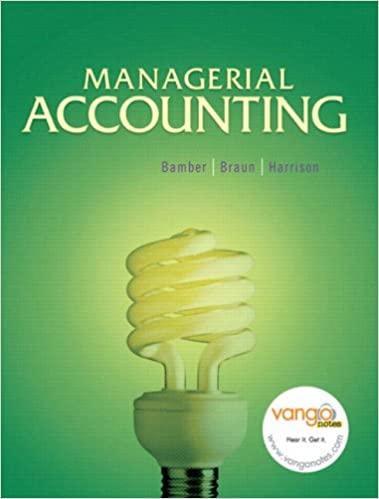Finding the cost of flight routes (Learning Objective 2) Major airlines such as American, Delta, and Continental
Question:
Finding the cost of flight routes (Learning Objective 2)
Major airlines such as American, Delta, and Continental are struggling to meet the challenges of budget carriers such as Southwest and JetBlue. Suppose Delta CFO Edward Bastian has just returned from a meeting on strategies for responding to competition from budget carriers. The vice president of operations suggests doing nothing: “We just need to wait until these new airlines run out of money. They can¬ not be making money with their low fares.” In contrast, the vice president of mar¬ keting, not wanting to lose marketing share, suggests cutting Delta’s fares to match the competition. “If JetBlue charges only $75 for that flight from New York, so must we!” Others, including CFO Bastian, emphasize the potential for cutting costs. Another possibility is starting a new budget airline within Delta. Imagine that CEO Gerald Grinstein cuts the meeting short and directs Bastian to “get some hard data.”
As a start, Bastian decides to collect cost and revenue data for a typical Delta flight and then compare it to the data for a competitor. Assume that he prepares the following schedule:

Excluding food and beverage, Bastian estimates that the cost per available seat mile is $0,084 for Delta, compared to $0,053 for JetBlue. (That is, the cost of flying a seat for one mile—whether or not the seat is occupied—is $0,084 for Delta and $0,053 for JetBlue.) Assume that the average cost of food and beverage is $5 per passenger for snacks and $10 for a meal.
Split your team into two groups. Group 1 should prepare its response to Requirement 1 and Group 2 should prepare its response to Requirement 2 before the entire team meets to consider Requirements 3 through 6.
Requirements 1. Group 1 uses the data to determine the following for Delta:
a. The total cost of Flight 1247 assuming a full plane (100% load factor)
b. The revenue generated by Flight 1247 assuming a 100% load factor and average revenue per one-way ticket of $102
c. The profit per Flight 1247 given the responses to a and b 2. Group 2 uses the data to determine for JetBlue:
a. The total cost of Flight 53 assuming a full plane (100% load factor)
b. The revenue generated by Flight 53 assuming a 100% load factor
c. The profit per Flight 53 given the responses to a and b 3. The entire team meets, and both groups combine their analyses. Based on the responses to Requirements 1 and 2, carefully evaluate each of the four alterna¬ tive strategies discussed in Delta’s executive meeting.
4. CFO Bastian wants additional data before he meets again with Delta’s CEO. Each group should repeat the analyses in both Requirements 1 and 2 using another Delta route in Requirement 1 and a budget airline other than JetBlue in Requirement 2 (other budget airlines include America West, with a cost per available seat mile of about $0,065, and Southwest Airlines, with a cost per available seat mile of about $0,063). Information on flights, available seats, airfares, and mileage are available on airline Web sites.
5. The analysis in this project is based on several simplifying assumptions. As a team, brainstorm factors that your quantitative evaluation does not include but that may affect a comparison of Delta’s operations against budget carriers.
6. Prepare a memo from CFO Bastian addressed to Delta CEO Grinstein summa¬ rizing the results of your analyses. Be sure to include the limitations of your analyses identified in Requirement 5. Use the following format for your memo.

Step by Step Answer:

Managerial Accounting
ISBN: 9780138129712
1st Edition
Authors: Linda Smith Bamber, Karen Wilken Braun, Jr. Harrison, Walter T.





